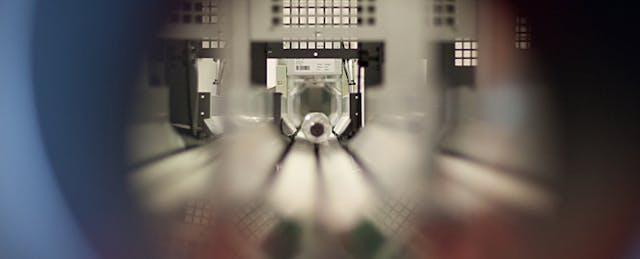One of the more interesting pieces of new edtech research is a paper by Telmo Zarraonandia of the Universidad Carlos III de Madrid in which he describes a pilot experiment involving his latest creation: an “Augmented Lecture Feedback” (ALF) system.
So, what exactly is an ALF system?
Imagine you're teaching a geometry lesson. There are eight minutes of class left and you can't decide whether to spend it reviewing old concepts or introducing a new one. So you press a button on your smartphone and, on your glasses, a bubble appears on each student’s head showing their self-reported "proficiency" on the previous 20 minutes of learning. In addition, the program that's projecting the bubbles proceeds to perform a few calculations. You learn that students’ overall comfort with the day’s material is 0.6 standard deviations higher than normal. Not only that, but among the lowest performing quintile, student comfort is 0.9 standard higher. Armed with this knowledge, you decide to push on instead of review.
Ok, so that's not quite what Zarraonandia has created. But his system of immediate and relatively unobtrusive student feedback is an important step toward making such a vision a reality.
In Zarraonandia’s ALF system, the display is limited to a red 'x', a green check mark, or a yellow question mark. The symbols are generated when students answer a question on a mobile device. For example, they could be asked to rate their knowledge by selecting "I understand," "I have some doubts," or "I don't understand." There are also no descriptive statistics that make use of historical data--the only additional display is a pie chart with the distribution of student answers. Finally, the goggles he designed are distractingly goofy and look like they're from a 1990's virtual reality arcade game. (Watch them in this video.)
But there are a number of benefits to an ALF system. It can collect information to help teachers set the pace of instruction and improve the distribution of individual attention given to students. Students don't have to raise their hand and out themselves as not understanding materials. And unlike the “clicker” systems being experimented with in college classrooms, it can provide teachers with real-time information in a way that doesn’t interrupt the flow of class by displaying results in front of a class every time a poll gets taken.
Yet despite these benefits, ultimately the most significant long-term impact of an ALF system may be in the way it allows teachers to become more scientific about their classroom practice. The ability to get real-time feedback could finally allow teachers to become researchers.
At the moment, one of the roadblocks to improving teaching is the difficulty for teachers to scientifically study what goes on in their classrooms. Even when a teacher has the time and freedom to try something novel, often the outcome of the "experiment" is buried in their own highly subjective opinion or an assessment given weeks later. The lack of timely feedback makes it hard to evaluate small instructional or curricular tweaks. An ALF system alleviates this problem by generating and amplifying an important source of feedback--a student's own opinion of their learning.
Imagine that our high school geometry teacher above teaches three classes at roughly the same level. If she wants to find out the best way to teach a lesson, she can create three variations and use the ALF system to get feedback about which delivery method is the most effective. While a student clicking the green check mark rather than a red 'x' isn't a perfect measure of learning, it's timelier than a formal assessment delivered at the end of the class or a few days later.
The potential of an ALF system to inform teaching practice goes far beyond a single school. Today, websites like ShareMyLesson and Gooru offer a massive pool of shared educational resources that teachers can use. ALF tools have the potential to improve the speed and accuracy with which the community evaluates which content and materials work best for different lessons in different settings.
Despite these possibilities, an ALF system would mean real change for the teaching profession, and therefore it will have its detractors. The ability to capture feedback from students on the fly would require teachers to rethink how they evaluate students’ understanding. Teachers would also have to learn how to find the right balance between data provided by an ALF system and their own subjective assessments. As a recent Forbes article mused, the teacher of the future may need to be a data scientist.
Make no mistake, innovations that flourish in our education system will bring about some level of creative destruction. Existing skills would become obsolete, and new skills would become necessary. Teachers won’t be replaced by technology, but by other teachers who can use the technology.
A future where an ALF system is in a significant number of classrooms is still decades away. But we will reach a point where such an innovation can be a large positive shock to the education system. In the meantime, let’s hope that ALF designers can learn a thing or two from Google Glass about how to make this technology not such an eyesore.


